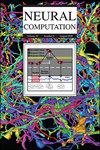Memory States From Almost Nothing: Representing and Computing in a Nonassociative Algebra
IF 2.1
4区 计算机科学
Q3 COMPUTER SCIENCE, ARTIFICIAL INTELLIGENCE
引用次数: 0
Abstract
This letter presents a nonassociative algebraic framework for the representation and computation of information items in high-dimensional space. This framework is consistent with the principles of spatial computing and with the empirical findings in cognitive science about memory. Computations are performed through a process of multiplication-like binding and nonassociative interference-like bundling. Models that rely on associative bundling typically lose order information, which necessitates the use of auxiliary order structures, such as position markers, to represent sequential information that is important for cognitive tasks. In contrast, the nonassociative bundling proposed allows the construction of sparse representations of arbitrarily long sequences that maintain their temporal structure across arbitrary lengths. In this operation, noise is a constituent element of the representation of order information rather than a means of obscuring it. The nonassociative nature of the proposed framework results in the representation of a single sequence by two distinct states. The L-state, generated through left-associative bundling, continuously updates and emphasizes a recency effect, while the R-state, formed through right-associative bundling, encodes finite sequences or chunks, capturing a primacy effect. The construction of these states may be associated with activity in the prefrontal cortex in relation to short-term memory and hippocampal encoding in long-term memory, respectively. The accuracy of retrieval is contingent on a decision-making process that is based on the mutual information between the memory states and the cue. The model is able to replicate the serial position curve, which reflects the empirical recency and primacy effects observed in cognitive experiments.记忆状态:非结合代数的表示与计算。
这封信提出了高维空间中信息项的表示和计算的非关联代数框架。这一框架与空间计算原理和认知科学关于记忆的实证研究结果是一致的。计算是通过类似乘法的绑定和类似非关联干涉的绑定过程来完成的。依赖于关联捆绑的模型通常会丢失顺序信息,这就需要使用辅助顺序结构(如位置标记)来表示对认知任务很重要的顺序信息。相反,提出的非关联捆绑允许构建任意长序列的稀疏表示,这些序列在任意长度上保持其时间结构。在这个操作中,噪声是表示有序信息的一个组成元素,而不是使其模糊的一种手段。所提出的框架的非关联性质导致用两个不同的状态表示单个序列。左结合捆绑形成的l态不断更新,强调近因效应;右结合捆绑形成的r态编码有限序列或块,捕捉质数效应。这些状态的构建可能分别与与短期记忆有关的前额叶皮层活动和与长期记忆有关的海马编码有关。检索的准确性取决于基于记忆状态和线索之间相互信息的决策过程。该模型能够复制序列位置曲线,反映了认知实验中观察到的经验近因效应和因因效应。
本文章由计算机程序翻译,如有差异,请以英文原文为准。
求助全文
约1分钟内获得全文
求助全文
来源期刊

Neural Computation
工程技术-计算机:人工智能
CiteScore
6.30
自引率
3.40%
发文量
83
审稿时长
3.0 months
期刊介绍:
Neural Computation is uniquely positioned at the crossroads between neuroscience and TMCS and welcomes the submission of original papers from all areas of TMCS, including: Advanced experimental design; Analysis of chemical sensor data; Connectomic reconstructions; Analysis of multielectrode and optical recordings; Genetic data for cell identity; Analysis of behavioral data; Multiscale models; Analysis of molecular mechanisms; Neuroinformatics; Analysis of brain imaging data; Neuromorphic engineering; Principles of neural coding, computation, circuit dynamics, and plasticity; Theories of brain function.
 求助内容:
求助内容: 应助结果提醒方式:
应助结果提醒方式:


